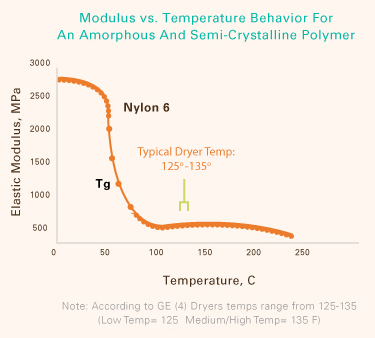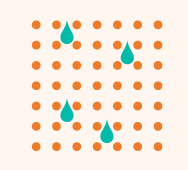Life Span of a Cloth Nappy - Do They Really Last From Birth to Potty Training?
This blog post has been written by Kim, CEO of Rockin Green Eco-Friendly Cleaning products, and shared with her permission. I believe this is an important topic for any parent looking into cloth nappies or those that already use them. Some of the things Kim has brought up in this blog post are things that I have also explained to our customers. We have to remember, reusable does not mean indestructable!
Some of the points mentioned aren't necessarily even the way I do things (for example, our nappies are usually washed with cold water although occassionally washed on warm) but overall the article brings up some great points.
Enjoy the read and I'd love to hear your thoughts on this too.
What is the oldest nappy in your stash?
Jacquie
When I started in the cloth diaper community nearly 7 years ago, the industry as we know it was in its infancy. Many of the diaper brands that we know and love today where still a few years from hitting the market, while others where just starting to break out of work-at-home status and moved into warehouse-needed-now status. It was an exciting time for the cloth diaper community!
With the rise of the “modern” cloth diaper- we suddenly were using things like PUL, TPU, Microfiber, Suede cloth, Fleece, Bamboo and hemp….all fabrics that our grandmothers never dreamt of using on their little one’s bottoms. They were stay dry, soft, and colorful and helped propel the industry into a force to be reckoned with.
Unfortunately over the years, I believe that there has been a mis-representation about the life span of these modern cloth diapers. Marketing claims, mis-informed customer service representatives, and hopeful parents all say that cloth diapers will LAST from birth to potty training. Many believe that these diapers should last through multiple children (or owners) and still look new. While this mis-representation might seem harmless enough…..some might even say it’s just semantics… I have seen it begin to whittle away at the very industry that I know and love.
Here are a few reasons why:
- Customers have unrealistic expectations about the life span of their diapers, and may be inclined to bash manufacturers of diapers for not holding up to their promises.
- Manufacturers are replacing diapers that have long since passed their life expectancy, to keep customers happy. These replacements prevent them from having the funds needed to give raises, create new and innovative diapering products, or even keep their lights on.
- Store owners are replacing diapers long since their life expectancy to keep customers happy, cutting into already slim profit margins.
- Price increases will ultimately follow. Manufactures price their products taking into account the cost of making that diaper, paying their employees, and factoring in profit margins for retailers. But they may not have factored in the cost of making 2 or even 3 diapers into the overall cost structure. In order to stay in business, they may have to increase the cost of diapers overall to cover the costs of unnecessary warranty claims.
As a detergent manufacturer- we have a lot of customers that cloth diaper. It’s a great eco-friendly option for a lot of parents. Because of that, we spend a lot of our time understanding the science behind these “modern” cloth diaper fabrics- I have spent countless hours researching, talking to chemists, and fabric manufacturers about the pros and cons to these components and wanted to share some of my knowledge with you. So please, follow me this week as we de-construct the modern cloth diaper and talk about the realistic expectations we should be putting on our diapers and their life expectancy.
But first a little math for you:
The average cloth diaperer washes every 2.5 days, so a diaper is washed approximately 146 times a year…or 438 times if you use a diaper for birth to potty training.
That’s a lot of washes!
*Buying used is a trend in cloth diapers that can prove even more disappointing. You don’t know how many washes that diaper has already endured!
Think about this in terms of a normal piece of clothing- like a t-shirt. If you wore that shirt, once a week it would undergo 52 washes a year. It would take almost 8.5 years to equal the amount of washing that 1 cloth diaper is subjected to. IF that shirt stood up to 8.5 years of washing- what would it look like? My guess is you would have a faded, holey t-shirt suitable for cleaning counters.
So why do we expect more of our cloth diapers?
First things first, let’s look at the lifespan of elastic. Generally speaking elastic is going to be the first thing that will go on your diapers.
A diaper manufacturer has a few options when it comes to choosing elastic for their diapers- they have to factor in cost as well as life span expectancy when choosing the right material. The main two types are:
- Rubber/Latex Based (Woven/Braided and some Fold Over Elastic (FOE)- Life Expectancy Approximately 1 year.
Rubbers are solids that are made by crosslinking polymers. Polymers form entropic springs whose stiffness increase as the temperature increases.” (1) Basically this means: The hotter the water/dryer the quicker your Rubber/Latex based elastic wears out.
- Nylon- (FOE)- Approximately 1 year- Nylon begins to degrade when temperatures go over 50 degrees c or 122 F. (6)

So basically, no matter what type of elastic the manufacturer chooses temperature makes a huge difference in the life expectancy of the diaper. As we see from the chart above- and according to GE, dryer temps range from 125-135 degrees which can begin to degrade elastic.
Tip: To prolong the life or your elastic- or at least to get the full year out of it- avoid the dryer all together and hang dry. If you must use the dryer, avoid stretching elastic when warm as this will stress the polymers at their most fragile state.
Now we are going to talk about the inside part of the diaper. This can be microfiber, cotton, bamboo and hemp just to name a few.
The most common are:
- Microfiber/Fleece: Lifespan- 2 plus years. Microfiber is a synthetic fiber made up of a blend of polyester and polyamide or nylon. These materials are bundled together to form a strand that when examined under a microscope appears in the shape of a star. Those bundles are then split into ultra-fine single fibers using a specific combination of chemicals, heat and agitation. The fibers are finally woven together to make the finished microfiber product. (18) Lifespan: 100-500 Washes 2 Years+ Translation: This stuff is going to last for a long time! The rest of the diaper will break down before the microfiber does.
- Natural Fibers- 9 months- 1 Year. There is jersey, twill, birdseye, flannel, fleece, knits, and wovens. It can withstand high temperature with little effect. Unfortunately, the nature of natural fibers is that they do break down over time. Regardless of wash routine. If you were to look at natural fabric under a microscope you will notice that even after 10 washes in plain water, the fabric starts to relax and the weave gets looser. After 100 washes, the Elmendorf tear resistance is very high.

So how do you prolong the life of your diapers when it comes to microfiber or natural fibers?
Have a LARGER stash! The more diapers in rotation, the less washing each one has to endure. Plain and simple.
we talk about one of the most controversial component of the modern cloth diaper- PUL.
Now I want to preface this section by saying that PUL is one of the most expensive components in a cloth diaper. It is also one of the hardest materials to procure- so finding a reputable, reasonably priced PUL is a major undertaking for any diaper manufacturer.
It is also important to know that no PUL is PERFECT. After a little digging into the patent on PUL we find that it’s not even 100% waterproof. The manufacturing process creates a product that is mostly water-proof, but small amounts of liquid can still seep through or be absorbed into the polyester shell with each wash. How you treat your pul, how you wash it and how you dry it will have a significant effect on how long it lasts for you and your family.

PUL/TPU- These fabrics are made by laminating a polyurethane membrane to the back of a polyester interlock knit using either a heat or chemical process. Approximately 1.5 years or 100-200 washes. (14,17)
- (15, 16) PUL is usually adhered in a small dot pattern. (Don’t believe us- pull out a diaper out and look!) The areas between the dots are hydrophilic, which means that it absorbs water. The more water it absorbs, the faster the PUL laminate will break down. Factors such as the thickness of the polyurethane membrane and the space between the adhesion areas, all have an effect on the life of your diaper. This is why you will see that some brands/colors/prints of PUL are more prone to delamination than others.
Translation: Not all PUL is created equal. You get what you pay for.
Thermal shock can speed the process up. Polyester fabrics are strongly susceptible to thermal shock creasing caused by rapid cooling during washing. Wrinkles put into the fabric in this way are extremely difficult to remove later (if at all) , therefore a controlled lowering or cool down sequence needs to be incorporated into the wash cycle, particularly after the hot wash and during the rinsing stages. IE. Shock can increase the space between adhesions, increasing the possibility of delamination over time. So avoid extreme temperature changes.
Side Note:
Did you know? That certain Fungi & Bacteria eat PUL? (8)
Two organisms: Pestalotiopsis microspora E2712A and E3317B, found in the Amazon were uniquely able to breakdown PUL. Comamonas acidovorans (a bacteria strain found in many water sources across the globe) showed similar degradation. The optimum temperature for PUR esterase was 45°C. The thermostability was also determined: PUR esterase was stable within 30 min of incubation at 55°C but almost inactivated (85%) at 60°C. (12) Translation: Wash in HOT to kill bacteria
How do you prolong the life of your PUL?
Buy good quality diapers. Read reviews, paying particular attention to reports of delamination. And avoid extreme temperature changes- go from warm rinse, to hot, and then back to warm. Avoid hot to cold without a cool down period.
Note: use your common sense here- if the owner abused them and used crazy washing methods, that is not an indication of a bad diaper- just a bad diaper owner!
we have looked at the different components that make up the modern cloth diaper and have touched on ways to prolong the life of our diaper components- or at least have a realistic expectation of how long they should last.
Here are a few more things that can significantly affect the life span of your diapers:
Water!
- Many public water sources use chlorine to disinfect their water. Chlorine (ie bleach) can break down clothing faster. Commomanos acidovarons (remember the PUL eating bacteria?) is actually much more common in high chlorine water. (12)
- Hard water can break down fibers up to 40% faster than their soft water counterparts.
- If you have soft water, it may be harder to get your detergent rinsed out. Leftover soap can cause your diapers to break down faster as well. Detergent is an alkaline substance that should not sit in fabric for prolong periods of time. The higher PH of the detergent, the more damage you will see. This why we discourage the use of add-ons like Washing Soda and Bleach.
So in Summary- Here’s How to prolong the life of your diapers:
- Have a large stash, the more diapers you have the less washing they have to endure.
- No add ons! Adding things like vinegar, bleach and washing soda will alter the PH of your wash causing fabrics to break down faster.
- Use right amount of soap- too much soap can make it difficult to rinse out completely and can break down the fabric.
- Dry on no heat or air dry- avoid stretching diapers when warm
- Wash every 2-3 days
- Limit soaking
- Wash in warm and hot, avoid extreme temperature changes
In summary, be realistic about your diapers. Treat them well, and know that you are
doing the best you can for your baby and the planet. When they become worn out- head over to your local cloth diaper store and purchase another stash. It’s what keeps our industry going- and helps keep the industry alive and thriving.
Kim also links these sources:
(1) http://www.phy.syr.edu/~abaskara/rubber_popular.html
(2) http://www.sciencedirect.com/science/article/pii/S0032386199007247
(3) http://www.nature.com/pj/journal/v42/n6/full/pj201022a.html
(4) http://www.geappliances.com/search/fast/infobase/10000971.htm
(5) http://www.wazoodle.com/templates/diaper_faq.htm
(6) http://www.ptonline.com/columns/the-effects-of-temperature
(7) http://dirtydiaperlaundry.com/is-all-pul-polyurethane-laminate-created-equal/
(8) http://aem.asm.org/content/77/17/6076.full
(9) http://aem.asm.org/content/77/17/6076/F2.large.jpg
(10) http://aem.asm.org/content/77/17/6076/F4.large.jpg
(11) http://www.herbcyclopedia.com/index.php?option=com_zoo&task=item&item_id=327&Itemid=193
(12) http://www.ncbi.nlm.nih.gov/pmc/articles/PMC124672/
(13) http://www.materialised.com/handling-fr-polyester-fabrics-in-the-laundry/
(14) http://www.akastex.com/services-2/polyurethane-lamination/
(15) http://www.google.com/patents/WO1997038854A1
(16) http://www.google.com/patents/DE4003764A1?cl=en
(17) http://www.edley.com/PUL_lamination_process.html
(18) http://www.cleanlink.com/hs/article/Understanding-Microfiber-Technology–3970
(19) www2.dupont.com/Personal…/en_US/…/k16121proterasellsheet6pg.pdf
Posted: Saturday 18 July 2015

